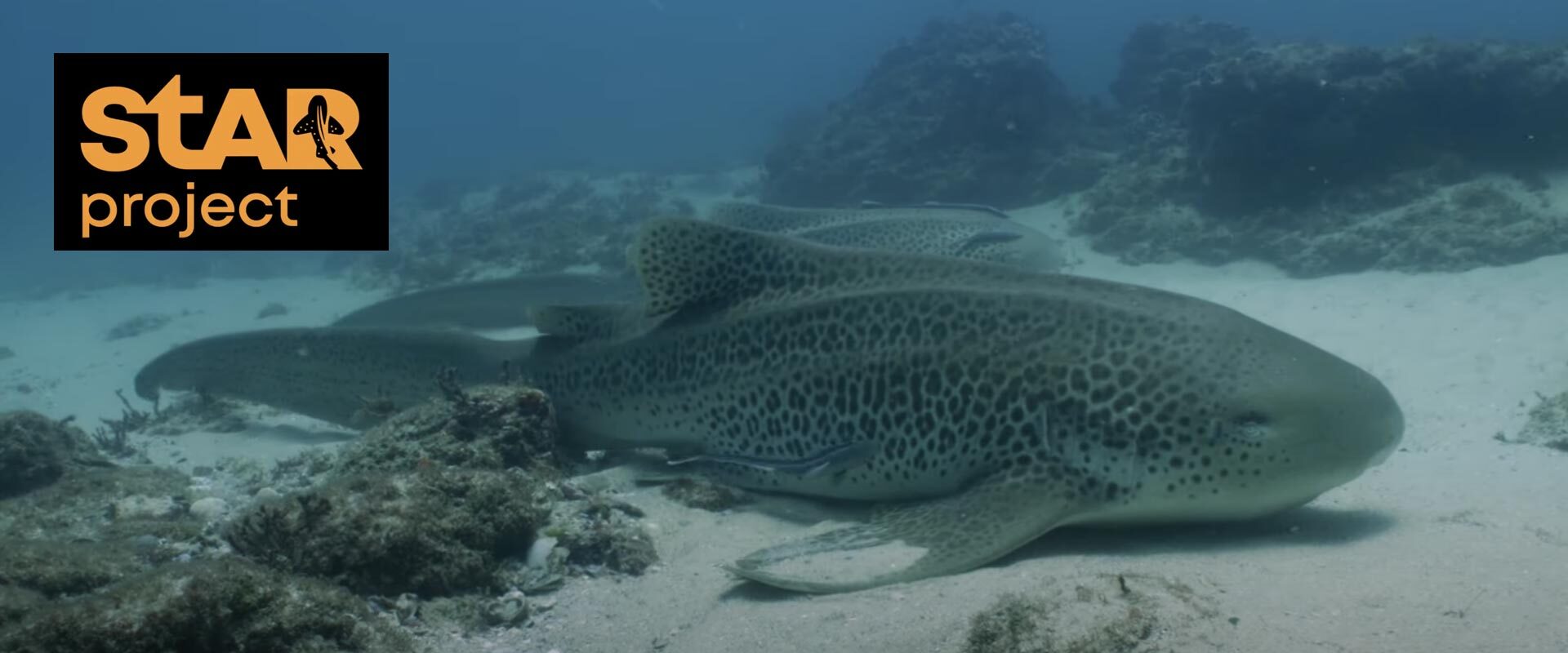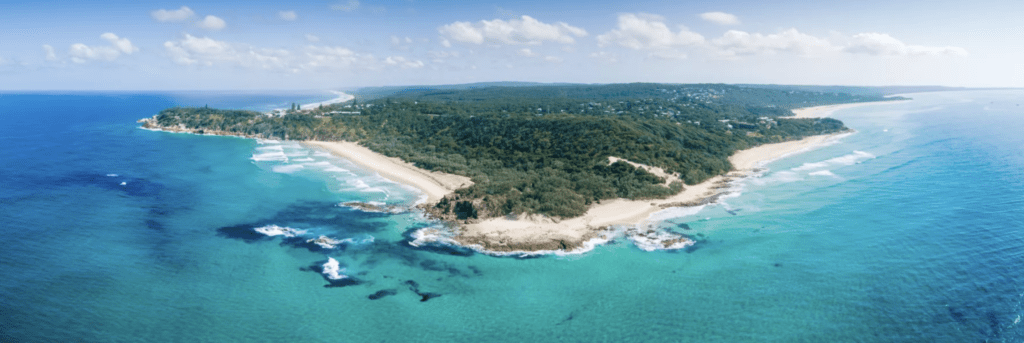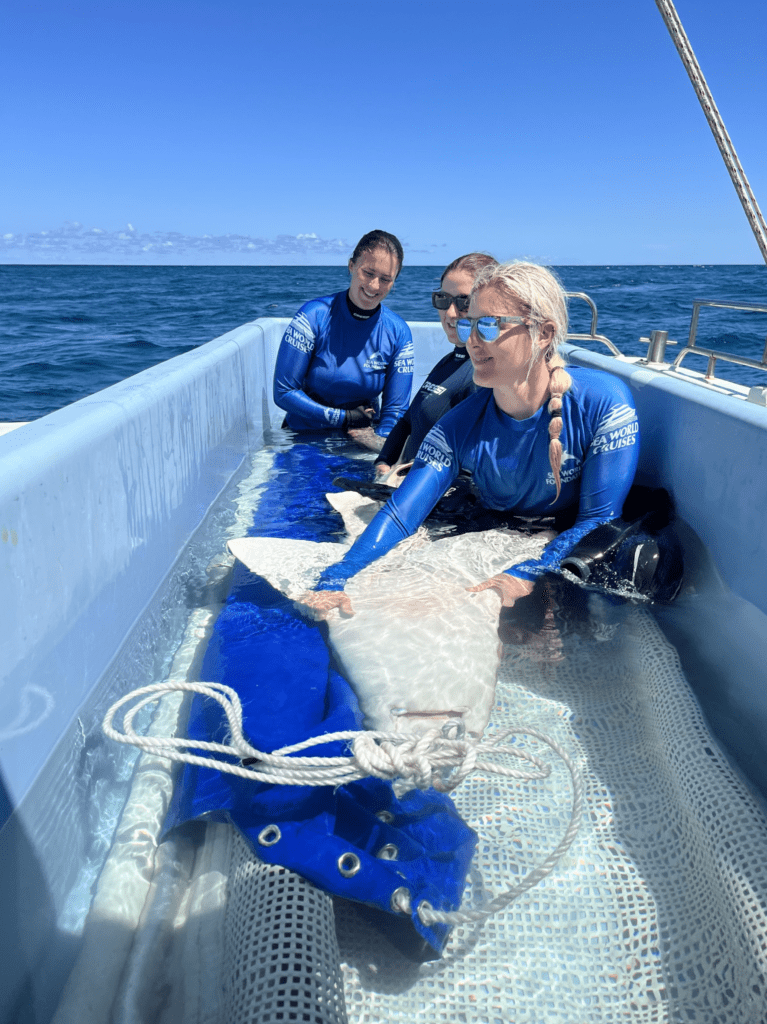Expedition North Stradbroke: Sampling and Tagging Leopard Sharks in Moreton Bay, Australia
Administrator’s note: This blog post is shared from ReShark’s Indonesia StAR Project
May 30
Expedition North Stradbroke: Sampling and Tagging Leopard Leopard Sharks in Moreton Bay, Australia
“Our work off North Stradbroke Island focuses on a seasonal aggregation of adult Indo-Pacific leopard sharks. We employ a range of techniques to research their biology and ecology to inform the StAR Project. This includes taking photos of spotting patterns to track individuals through time, sampling blood and tissue to investigate reproductive hormones and diet, and acoustic tracking to understand migratory patterns and identify critical habitat.”
Dr. Christine Dudgeon
StAR Project Steering Committee & Co-Chair, StAR Project Research Working Group
Senior Research Fellow, University of Queensland & University of the Sunshine Coast
North Stradbroke Island (Minjerribah), located in Moreton Bay in Queensland, Australia, is a summer aggregation site for leopard sharks. Researchers suspect that this area is where they come to mate, before they move north to the Great Barrier Reef in winter to lay their eggs.
The big aggregations that can be found in Straddie make it a really conducive place to study the species. Several members for the ReShark Council and StAR Project Steering Committee including Dr. Alistair Dove (CEO, Museum of Science & History), Dr. Lisa Hoopes (Senior Director of Research and Conservation, Georgia Aquarium) and Dr. Mark Erdmann (Vice President of Asia Pacific Marine Programs, Conservation International) were all already in Australia for a separate whale shark expedition up north earlier on. It was a perfect opportunity for them to join resident leopard shark researcher Dr. Christine Dudgeon (Senior Research Fellow, University of Queensland & University of the Sunshine Coast) later in the month to work on the adult leopard sharks.
As part of the expedition, the team managed to: (1) Capture a lot of photos for the Spot The Leopard Shark photo-ID database, (2) Acoustic tag 3 females, (3) Take cloacal swabs to look at what their natural diet is (to better inform what we feed the StAR Project pups), and (4) Take blood samples to look at hormones and microplastic contamination.
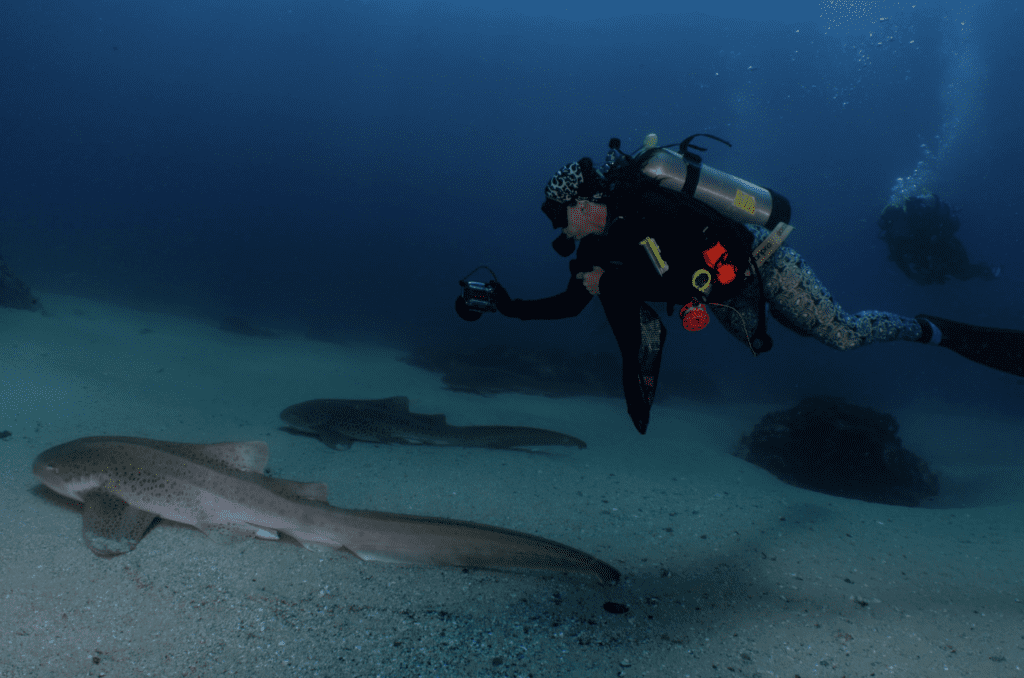
Dr. Christine Dudgeon photographs an adult leopard shark while on expedition at North Stradbroke Island. Photo by Mark Erdmann.

Dr. Lisa Hoopes (left) and Dr. Christine Dudgeon (middle) performing a cloacal swab on an adult leopard shark, while filmmaker Luca Vaime (right) captures the moment. Photo by Mark Erdmann.
With the cloacal swabs and blood draws, the team practiced doing them both on sharks they caught and brought to the surface and on sharks underwater. The team hopes to optimize things to a point where most work can be performed underwater so that the same protocols can be applied on juveniles in Raja Ampat for the StAR Project as well.
In the end, the team managed to sample 10 sharks they caught and brought to the surface, and they took successful cloacal swabs from 7 animals underwater. Out of the 10 animals brought to the surface, 8 were females and 2 were males. Acoustic tags were inserted into the females, and genetic swabs, cloacal swabs, blood and microplastic samples were obtained from each individuals. For the 7 leopard sharks sampled underwater, ambient swabs were also taken from the water column next to the sharks. The underwater blood draws turned out to be less successful and more experimentation with this protocol will be required. Finally, a tissue sample was also obtained from a white-spotted wedgefish (Rhynchobatus australiae).
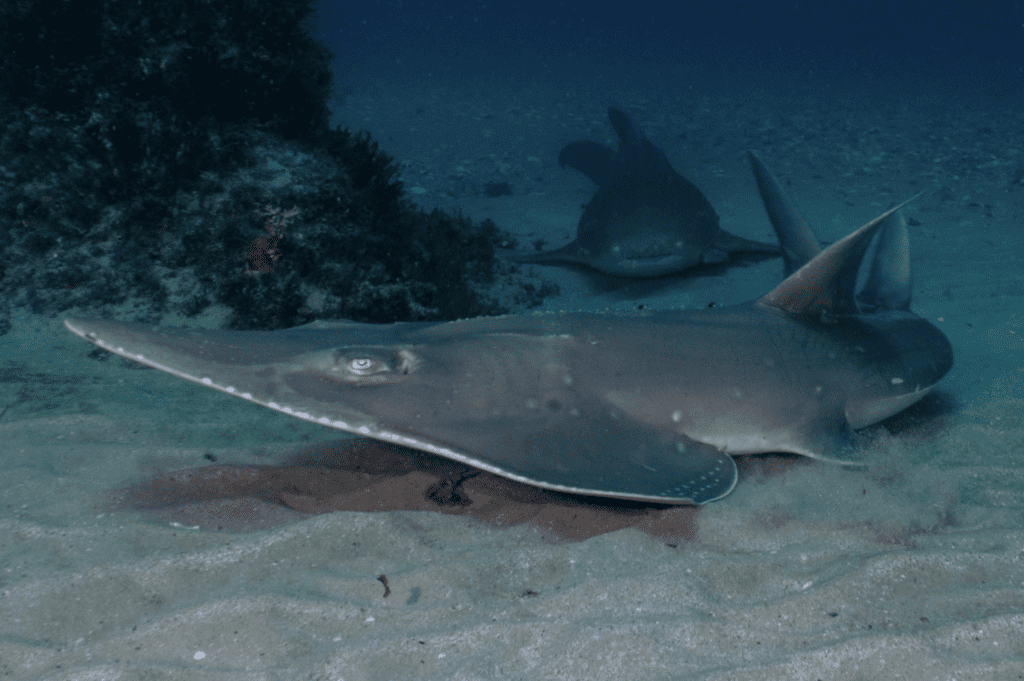
A white-spotted wedgefish, Rhynchobatus australiae (front) appears to have a stalker (back). Photo by Mark Erdmann.
The success of this inaugural StAR Project expedition would not have been possible without our team, participating partners and generous supporters, whom we are extremely grateful for:
Team: Dr. Christine Dudgeon, Dr. Alistair Dove, Cameron Cotterell, Dr. Lisa Hoopes, Dr. Mark Erdmann, Dr. Adam Barnett, Dr. Asia Armstrong, Dr. David Robinson, Dr. Simon Pierce, Luca Vaime, and Sea World Gold Coast’s Veterinary and Husbandry Teams
Partner organizations: Biopixel Oceans Foundation, Conservation International, Georgia Aquarium, Museum of Science & History, Sea World Foundation, Sea World Marine Park Gold Coast, SEA LIFE Sydney Aquarium, University of Queensland, University of the Sunshine Coast, Spot The Leopard Shark, and Sundive Byron Bay
Supporters: Baillie Family, Biopixel Oceans Foundation, Conservation International, MAC3 Impact Philanthropies, Phil Yeung, and Sea World Foundation
***Team member/filmmaker Luca Vaime was there to capture the amazing work. His company, Indo Pacific Films, produced the expedition film.
The full film ‘Expedition: North Stradbroke’ is now available for viewing on You Tube.





































